317 horsepower contained within a compact body. Today’s test subject is the new X1 M35i xDrive. This is the first model with the M badge on the X1 to be sold in South Korea. It is a high-performance premium compact SUV.
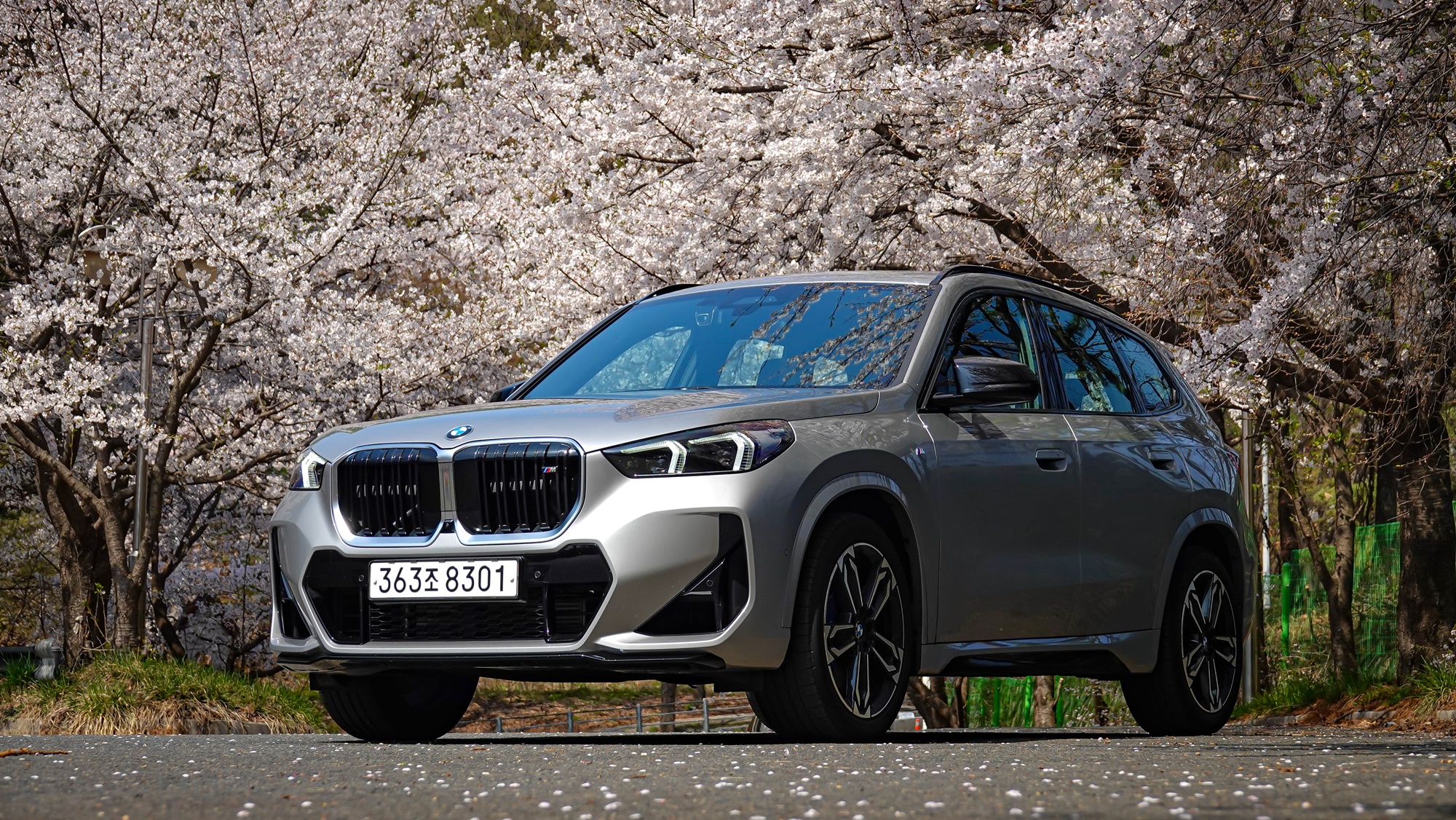
It features exclusive ‘M design’, ‘dynamic driving performance’, and ‘BMW OS9’. The vertical double-bar kidney grille, M exclusive front spoiler, dedicated side mirrors, 19-inch bi-color wheels, M exclusive quad tailpipes, and roof spoiler leave traces of M wherever you look.
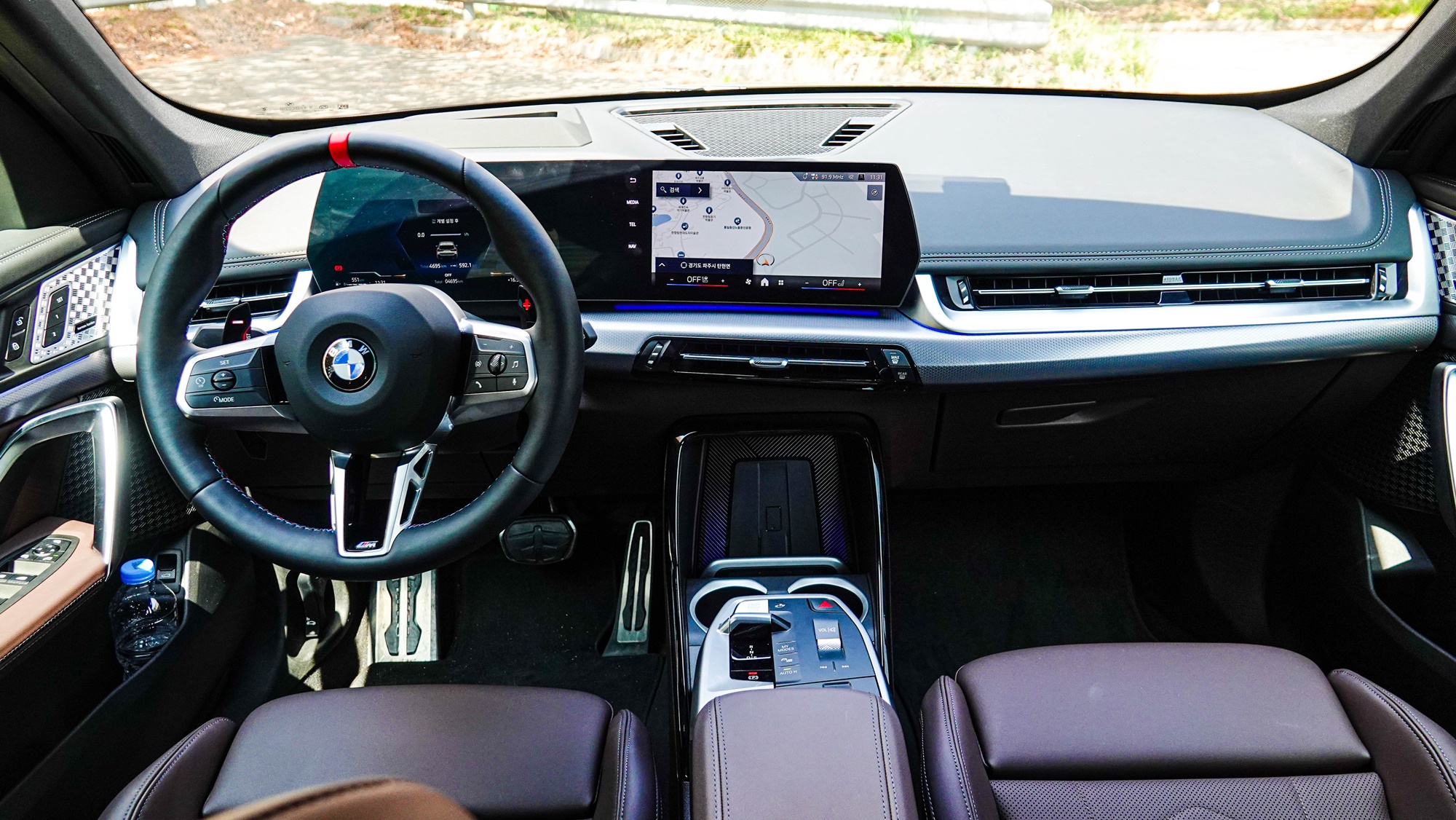
The interior features a curved display that seems to eliminate all buttons. The curved display consists of a 10.25-inch instrument cluster and a 10.7-inch center display. There are no buttons on the dashboard; most functions are selected and information is accessed via screen touch. Driving modes are also selected through the touch screen. A few buttons are found on the floating armrest, which integrates the gear selector and control panel.
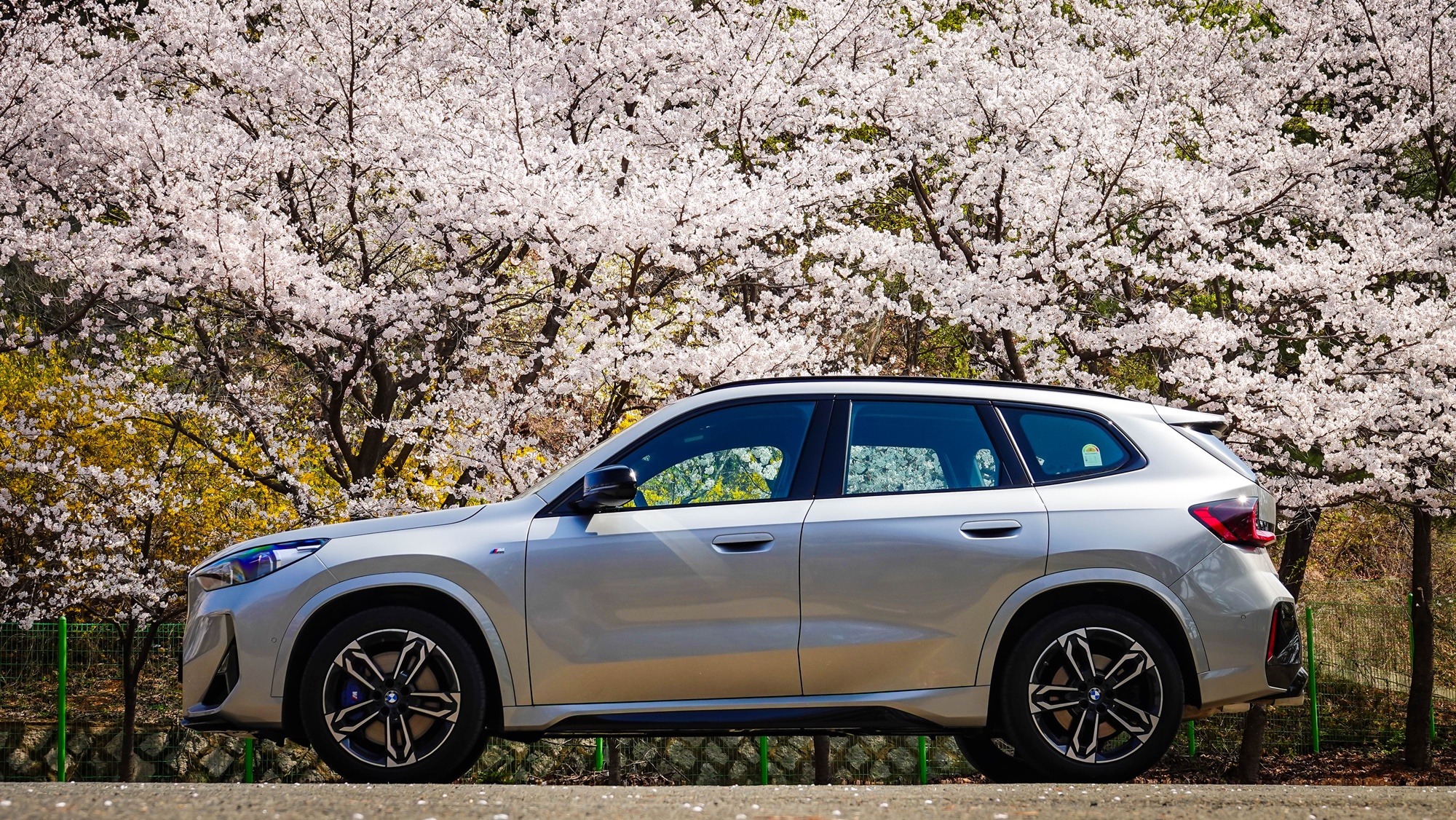
With a well-designed body shape ideal for enjoying high performance, the interior offers ample space that breaks free from the cramped quarters often seen in high-performance sports cars. Entering and exiting the driver’s seat is convenient. The rear seats are equipped with sliding capabilities and reclining angles. There’s enough space for two fists in front of the knees, which is hard to believe in a compact SUV. The space transcends its class.
The vehicle height is just right at 1,620mm. Although it is an SUV, it employs an adaptive M suspension that is 20mm lower than a standard X1. It’s not excessively high for a compact; it’s just slightly taller than a sedan, making it an ideal height for high-performance enjoyment.
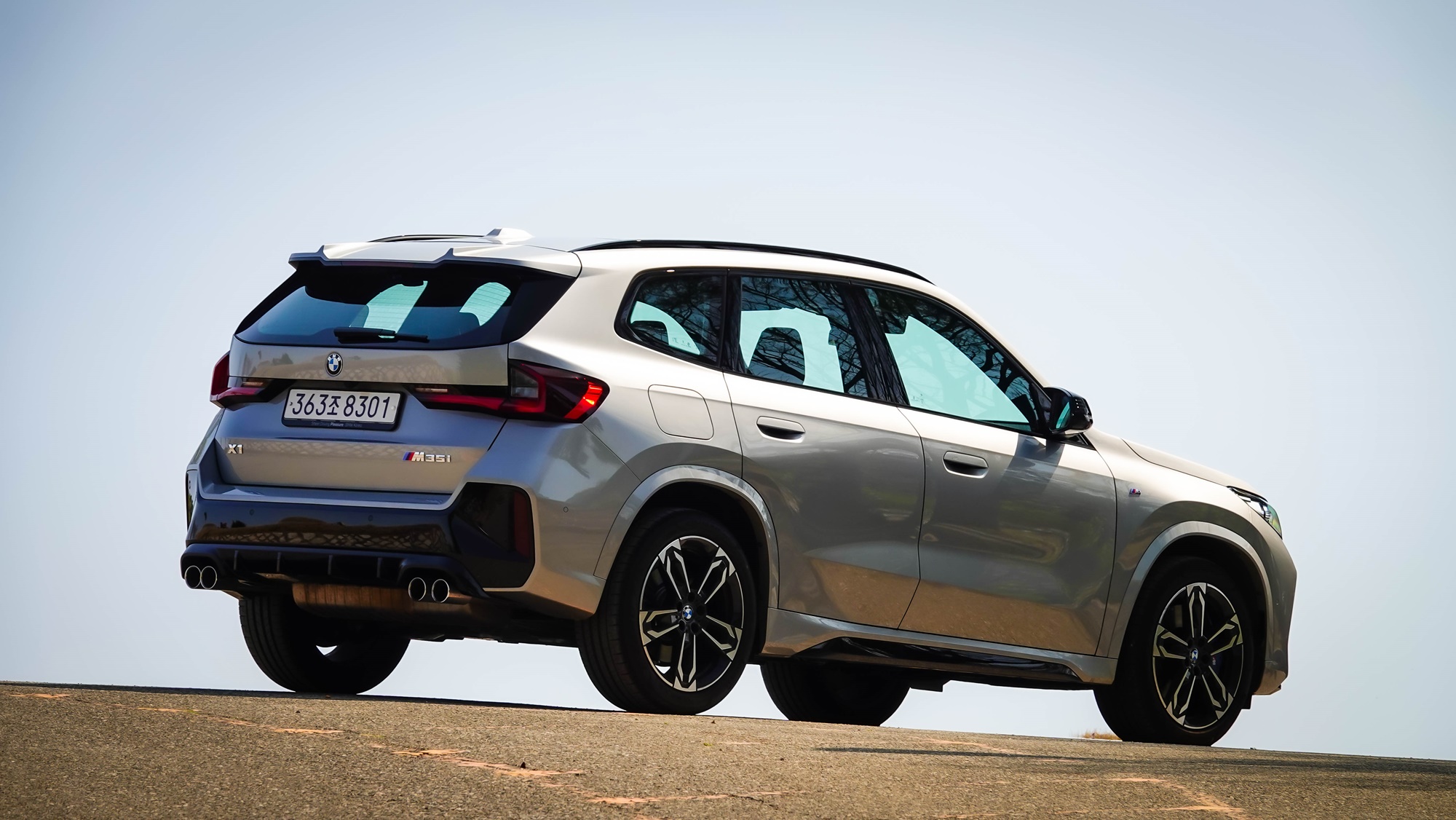
The all-wheel-drive system plays a crucial role. Utilizing an intelligent all-wheel-drive system with LSD applied to the front axle enhances driving stability. Especially at high speeds, body roll is minimized, resulting in a perceived speed significantly lower than actual. The combination of suspension and drivetrain effectively supports the 317 horsepower, ensuring a stable performance.
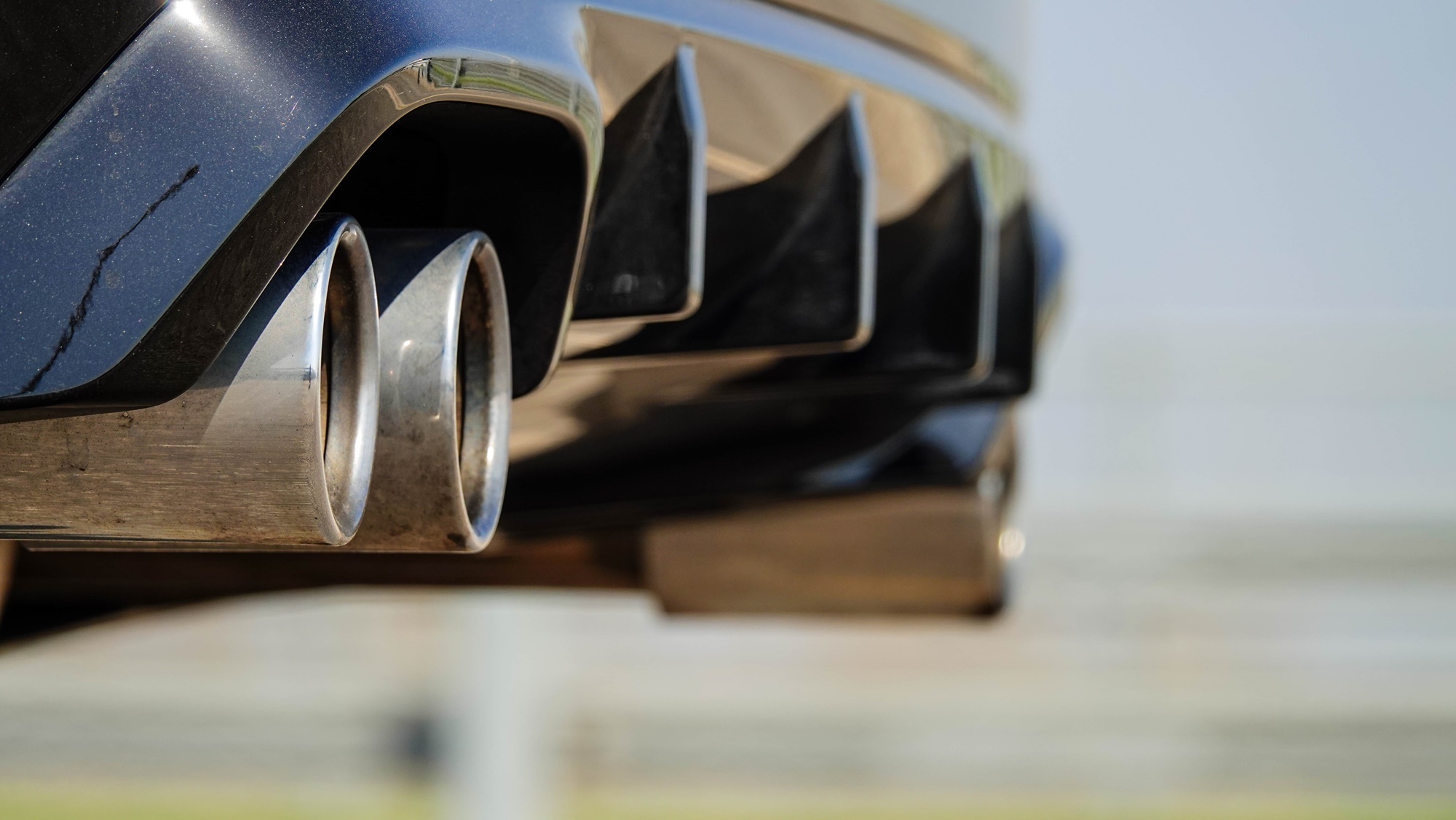
The term ‘compact car’ becomes irrelevant. Being small does not mean cramped or lacking in power. The cleverly designed compact frame accommodates a spacious interior, producing a robust 317 horsepower from a 2.0-liter four-cylinder TwinPower Turbo engine, managed by a 7-speed ‘double clutch’ transmission. While ‘dual-clutch’ may be a more accurate term, BMW still refers to it as double clutch. The trunk offers a base capacity of 540 liters, expandable to a maximum of 1,600 liters with the rear seats folded down.
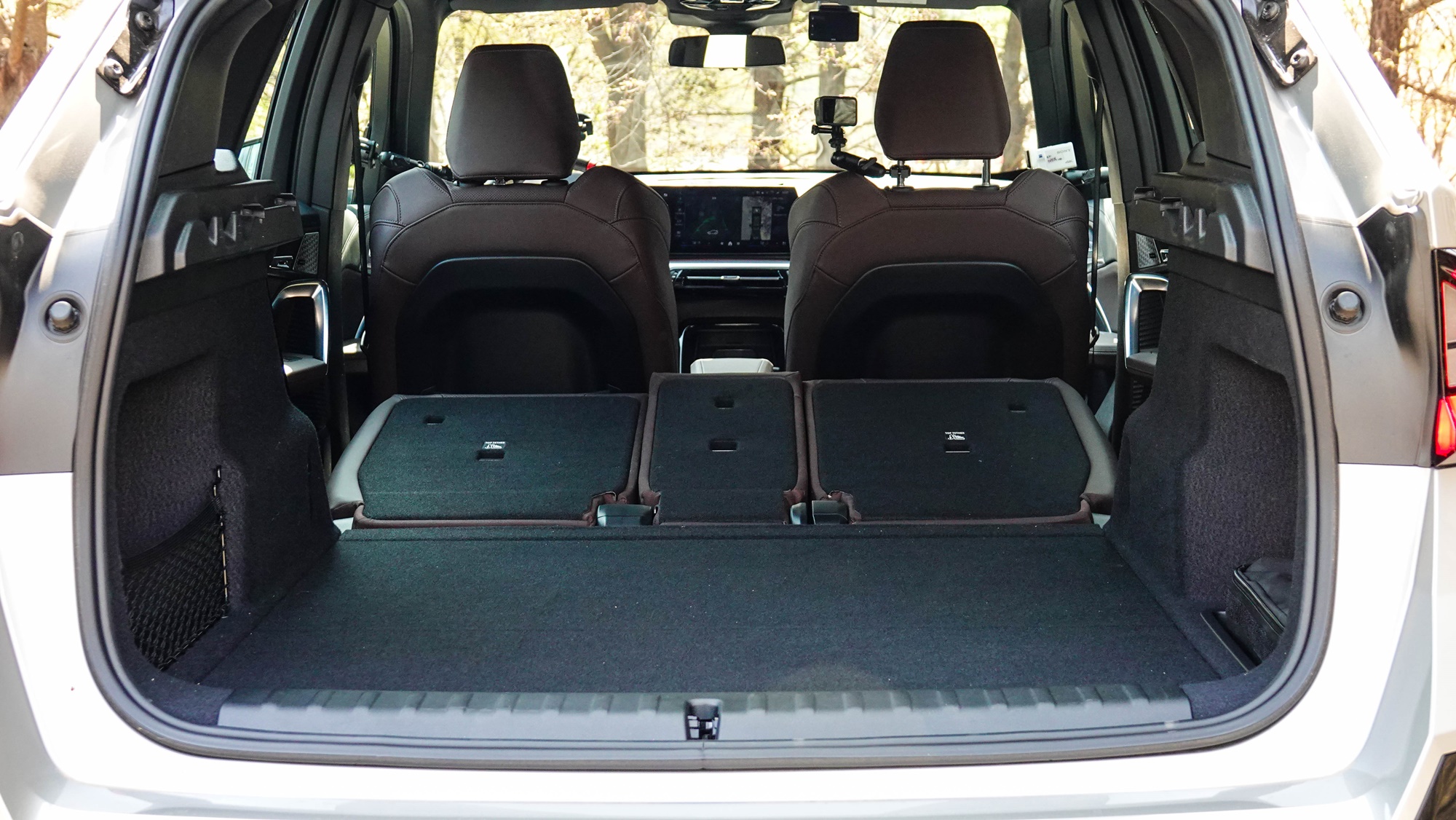
The car features a Korean navigation system based on T-map. This is one of the aspects that South Korean consumers would most welcome. T-map is now a trend in the imported car market, with Volvo, Mercedes-Benz, and BMW all adopting it.
The BMW Operating System 9 (OS 9) is employed. Like a computer’s Windows system, it is a software system that controls the vehicle’s hardware. With improvements in OS 9, the infotainment system becomes more user-friendly and intuitive. Voice commands can also be utilized in a natural conversational tone. You can even download games, similar to a smartphone. The significance of software continues to grow. Systems like OS will play a vital role in automotive development alongside powertrains.
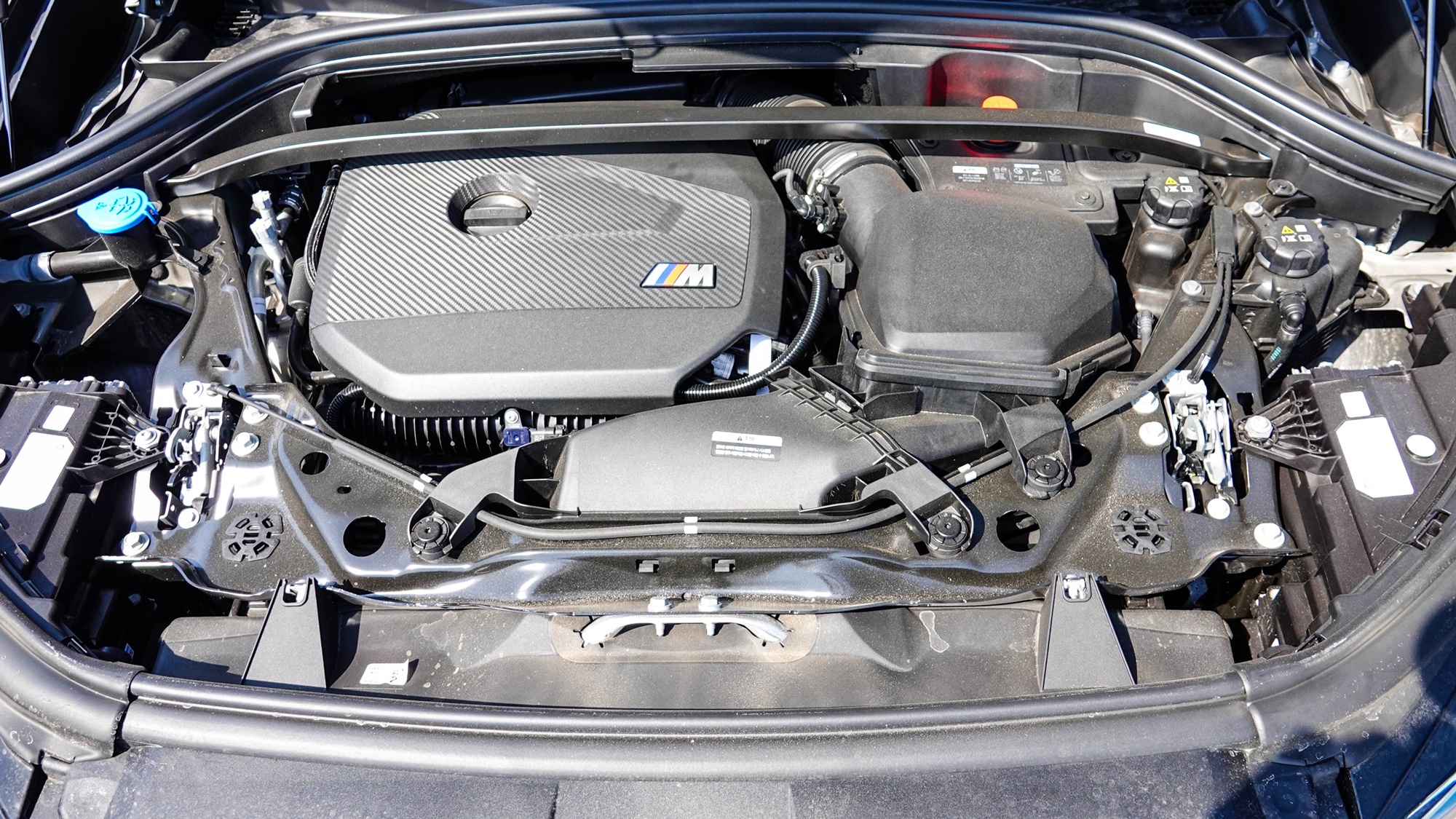
The four-cylinder TwinPower Turbo engine showcases a robust power output refined by the 7-speed transmission. As acceleration continues, each gear shift delivers a clear and decisive change in power. The discernible feeling of shifting is apparent. Through the paddle shifts, which enable manual control, the driving pleasure is truly experienced. Activating the ‘-shift’ lever briefly allows for a boost function that utilizes maximum power for 10 seconds.
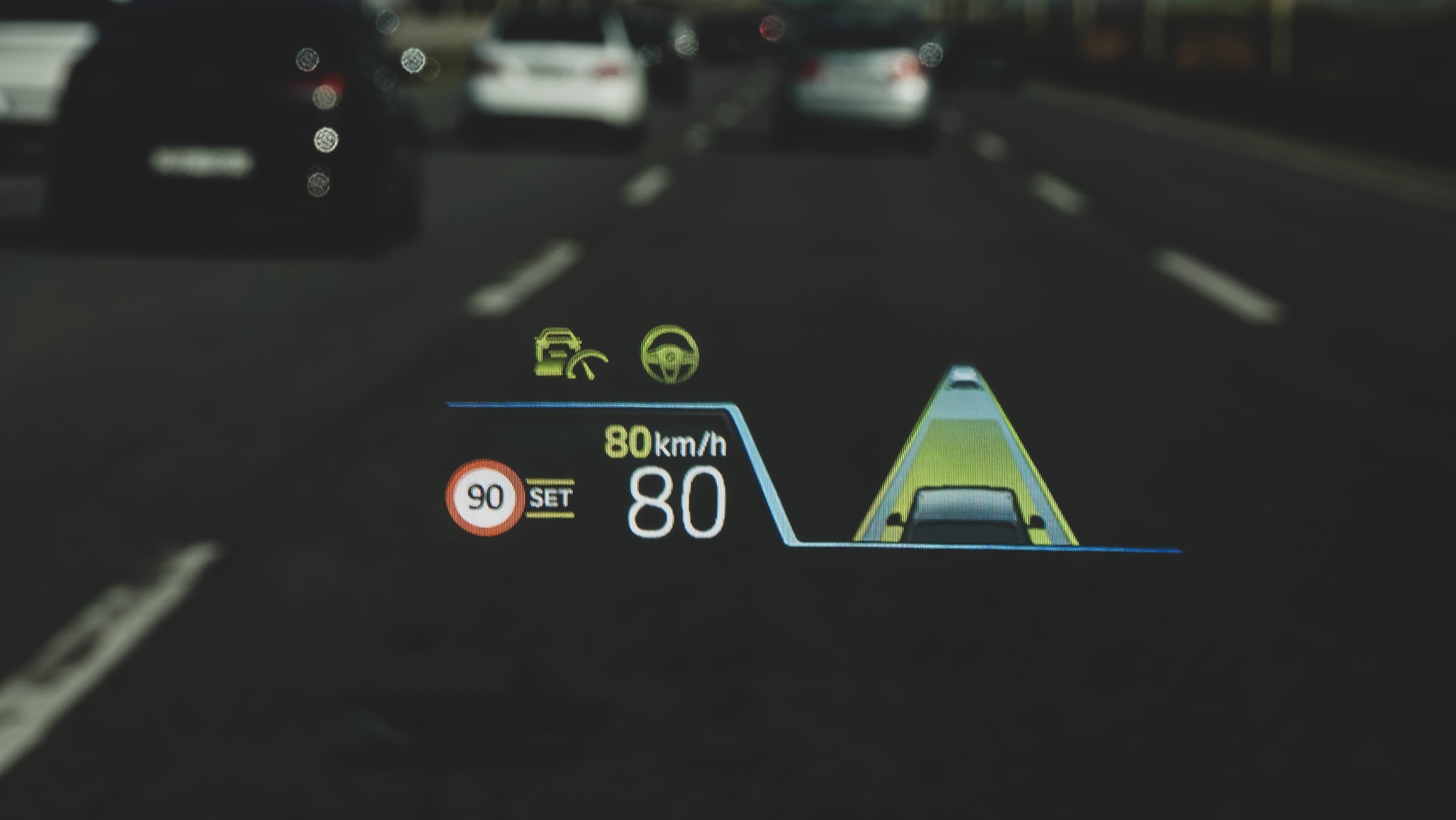
The shifting patterns include D, S, and M. When in D, a single pull engages Sport Mode, S. Operating the paddles in S allows for manual shifts, or M mode. In M, the driver must operate the shifts manually; no automatic shifting occurs. When maintaining high RPMs in M without shifting, the driver fully realizes their authority over the vehicle.
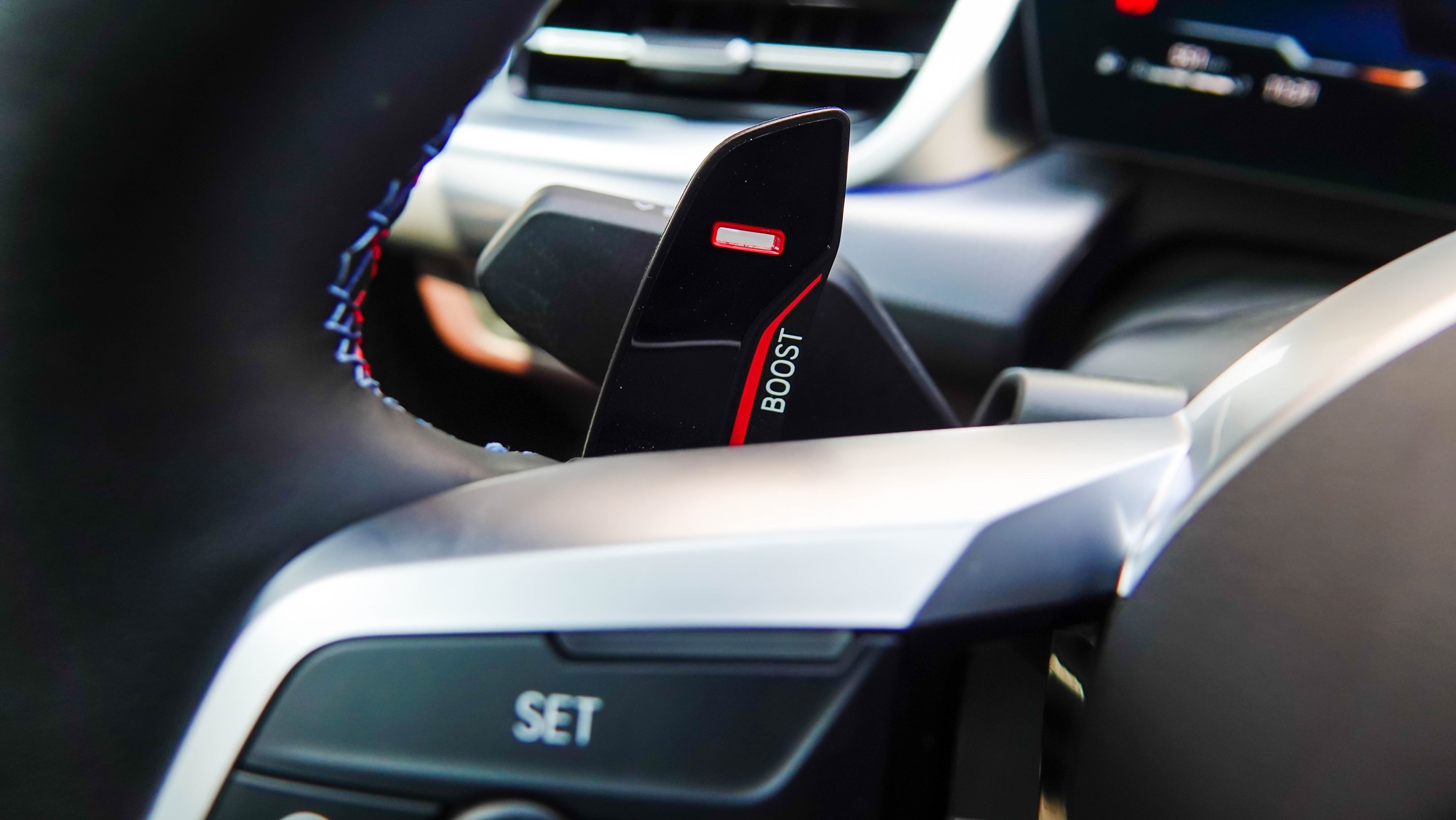
The engine produces a maximum power of 317 horsepower. With a curb weight of 1,735kg, the power-to-weight ratio stands at 5.47kg per horsepower, showcasing its high-performance nature. If we consider 5kg per horsepower as the dividing line between high-performance and supercars, you can gauge the X1 M35i’s standing well. The manufacturer claims a 0-100 km/h acceleration time of 5.4 seconds, with GPS-measured acceleration time reaching a best of 5.51 seconds.
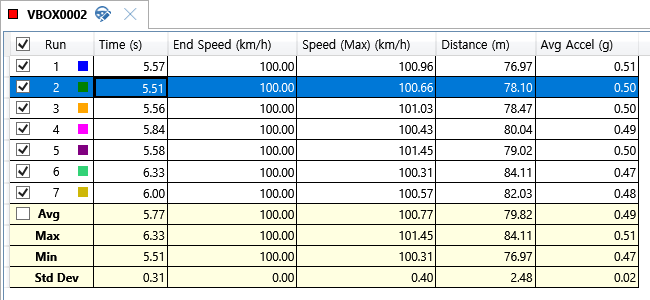
Following performance, fuel efficiency is another key point to consider. You might think monitoring fuel efficiency when driving a BMW M is contradictory; that’s true. However, it’s not entirely the case. One cannot always drive hot. Sometimes it’s essential to know how to drive economically. When leisurely driving the 55km from Paju to Seoul, I checked the actual fuel economy, which arrived at 16.6km/L. This is significantly higher than the official combined fuel economy of 10.2km/L. Given the traffic conditions and the drive lasting 1 hour 35 minutes, the fuel economy remains impressive.
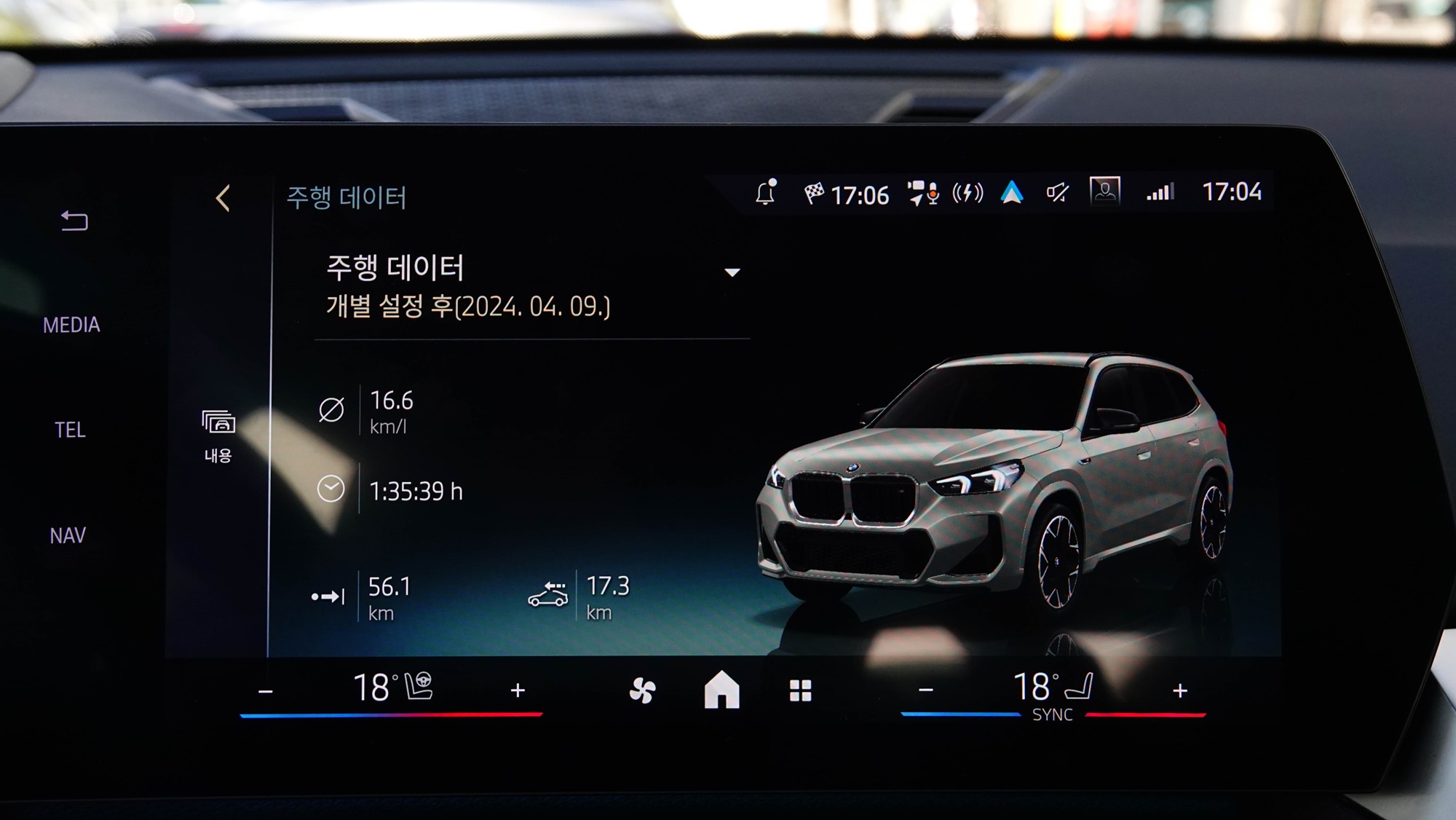
As mentioned earlier, the space and performance transcend the compact class. The price does too. The sales price is 71.5 million won, which is exceedingly high for a compact car. However, for those who appreciate the value of a vehicle with the M badge, it is a price that subtly prompts a look at the bank account. This car is not for many; it is for a select few who understand its worth. The price speaks volumes of that.
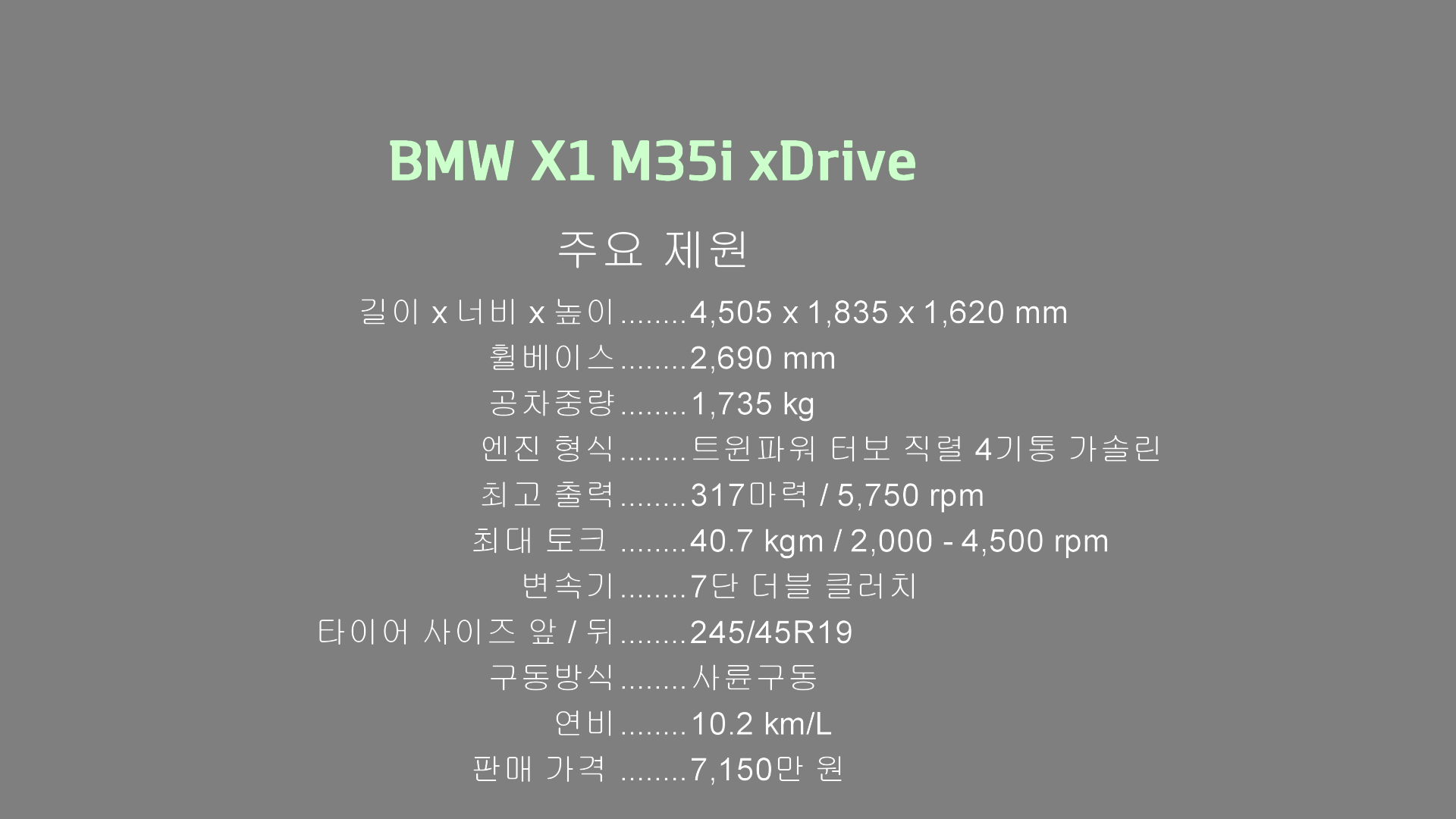
Direct thoughts by Oh Jong-hoon
There is no ventilated seat function. While there are heating functions for the seats and steering wheel, the absence of ventilated seats is disappointing given the price. There’s no comfort quite like having ventilated seats during the summer.
Engine restarts can be a bit rough. Occasionally, when the previously quiet engine is started anew and should take off, the movement can be sluggish. It could have been smoother had a 48V system been applied.
There seems to be an obsession with removing buttons. Changing driving modes must be done via screen touch. Selecting with a button feels more natural; instead, the button must be used to display the screen, followed by a touch selection. This feels cumbersome and awkward. While removing buttons is good, using them where necessary is better.
Oh Jong-hoon yes@autodiary.kr

